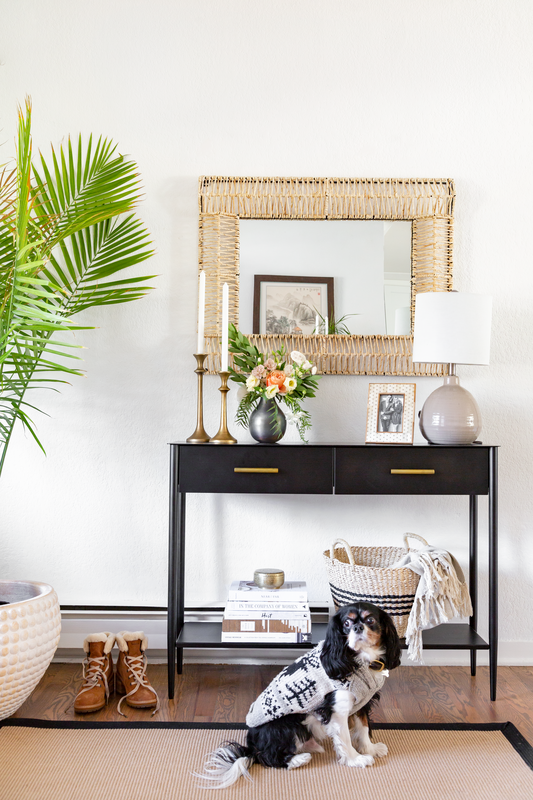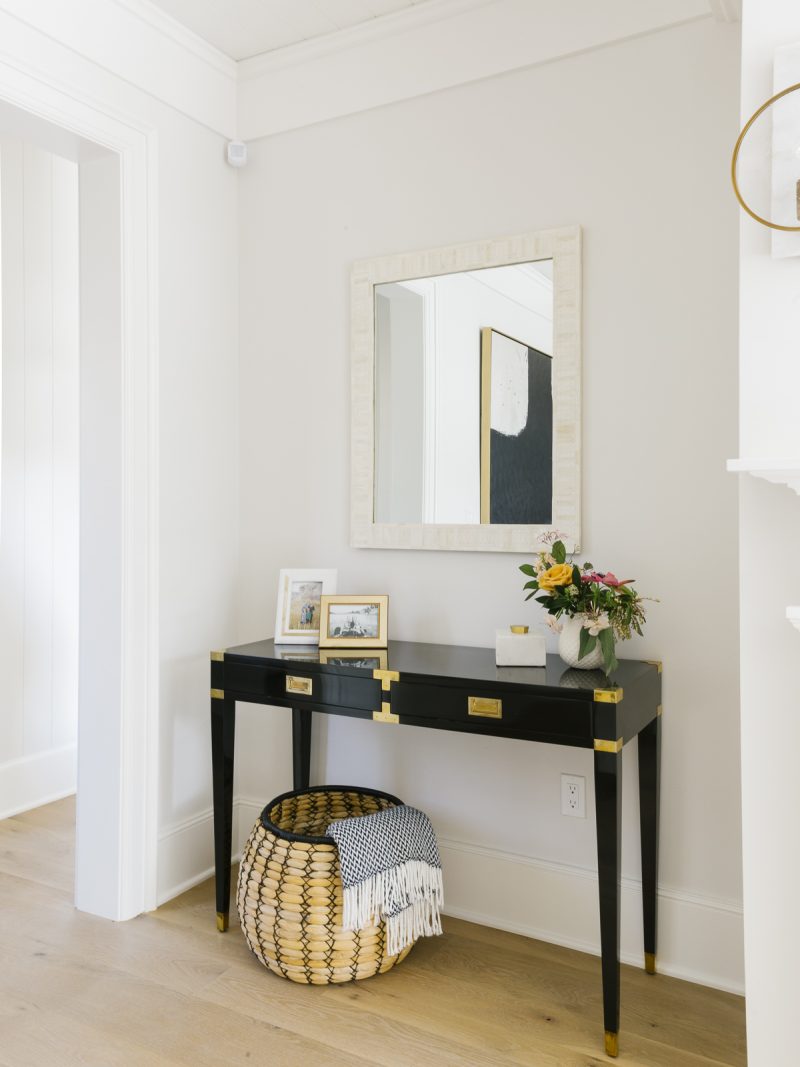For most of us looking to elevate and improve our homes, entryways are an afterthought: a place to stash the everyday carry or shed outer layers after an errand usually takes second (or third, or fourth) chair to sofa selections, dining table decisions and kitchen conundrums.
Not so fast, though—whether a nook pass-through, a foyer moment or just a few square feet next to the front door, entryways deserve the same care and curation as any other spot in the house. Think of it as curb appeal, but for the inside. And there’s no better time of year to look at our entryways with fresh eyes than the start of the year (and the start of this year, in particular—have we ever needed a comfortable, stylish and familiar moment to ease our comings and goings more than now?).
So let’s break down some fundamentals and take styling cues and inspiration for this often-overlooked space step by step:
Blank Slate, Prepped Space
If your space is like many of ours, you might be surprised at how much stuff can accumulate in the entryway. Don’t worry, though–this is a safe space both for the spark-joy-loyalists and minimalists-at-heart alike. After all, the goal isn’t to change your routine to fit your space, but to let your space accommodate and support the routines you already have. Mainly focused on a place for coats and totes? No shame in simple. Need a space that can pull shifts as a post office, mudroom, linen closet and outfit-review space? That’s just fine: it’s all in the how.
That said, you might clear out everything you can, give your entry space a cleaning, and go in and out of your door a few times (the neighbors will wonder; it’s okay). Where do your eyes go first? How much light is there? Should you account for a door opening? Do you already have closed storage opportunities, or not? Starting with your own eyes will provide much-needed guidance for the infinite resources and inspiration points at our fingertips.

A Structured Approach
After, though, come the tough questions: What now? Do you go full mudroom? Bring in a slim console table? Family portrait gallery on the wall above? We get it—all a bit daunting (psst…You might consider booking a chat with a Havenly designer to get all these queries and qualms off your chest. It’s what we’re here for, after all.)
For starters, categorize potential furniture and accessories into sets of three classes…
- Functional
- Inspiring
- Sentimental
…and focus on three zones:
- Floor
- Table height
- Eye-level
As for the classes: does form follow function, or the other way round? Hey, your space; your rules. (But why not both?) If you can pick a larger item that nails two (or three!) classes, you’ve got it made. Like that antique mirror that’s been in the family and waiting for it’s time to shine, or a snagged-at-that-incredible-market stoneware/ceramic vessel to cradle keys and change.
As for zones: perhaps in your ideal world you’d have ample storage at every height, but hold fast to the reality of your space for your best chance at achieving balance, interest and function. Lots of eye-level? Perhaps a hang-it-all with places aplenty for vertical storage, along with a series of prints to draw the eye along. No floor space to speak of? Bring shoe storage into a wall-mounted or under-bench solution. Need a bigger piece to hold things down? Can’t go wrong with a vintage roll-top secretary or a sofa table repurposed as entryway “a-ha” moment.

Anchor Away: Invest in Key Pieces
With your plan in hand, get eyes on anchor pieces you’re ready to invest in. While we’re clearly big fans of the online shopping foray, it can be helpful – not to mention inspirational – to wander big brand shops as well as off-the-beaten tracks vintage stores, scouting for those beloved “it had to be you” items that will become a visual mainstay in your entryway. (It bears mentioning, though: if safety and good sense point to a more distanced approach to shopping in this time, by all means!)
Pro tip: bring along a measuring tape, a quick sketch of the room with measurements, and even photos of your space (nothing fancy, phone pics are just fine)—all to max out your ability to imagine from the showroom floor to your home. Happy hunting!

Refresh and Rotate
With the main pieces nailed down (or nailed in!), it’s time for the finishing touches. A few guideposts:
- Start local…like, “your-own-home” local. Slow down and take a full-house stroll (fine, you can skip your ten-year-old’s room). We find there’s so many spaces and potential styling pieces we miss when going about our daily routines, so a walk-through with fresh eyes (and a libation of choice?) can turn into a fun and free scavenger hunt to start the styling layer.
- Rely on easy-care details. A marble tray to stash the keys, baskets to corral the clutter, a coffee table book flipped open to an inspiring image: all these offer utility or inspiration without the upkeep. Oh, and don’t think you can’t go green, too—but dodge the watering and worrying and go for a vase of dried florals to bring in a bit of height and whimsy.
- Keep it fresh and push the boundaries. You probably really only “see” your entryway for a few moments upon entry or exit, but you can use this feature to your advantage: play around with accent pieces and styles here that you aren’t quite ready to commit to in main living areas. Forever neutrals? A bold-hued monochrome print can bring a smile on your way out the door. Have a family accessory that holds a memory, story or legacy? Display it here and let it greet the lucky guests.
Whether a start-from-scratch overhaul or a styled-out tweak to an existing space, make it a resolution to give a little love to whatever entryway moment holds your comings and goings. Upgrading these pass-through spaces can be a low-stakes, cost-conscious and creativity-charging way to bring your home into the new year.

Looking for an expert take on your entry space? Take our style quiz to find the perfect designer for you.

